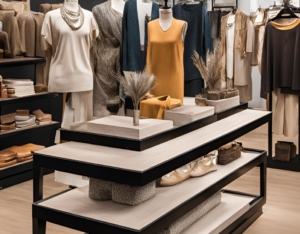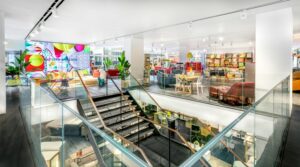While Direct-to-Consumer (DTC) brands continue to flourish in this digital age, more than half of consumers still prefer an in-store shopping experience. According to an article from Chain Store Age, about 54% of American consumers prefer brick-and-mortar retail to any other channel.
Many retail experts believe that offering the combination of digital shopping and a brick-and-mortar location is the perfect combination for delivering on consumer needs.
“Direct-to-consumer brands start online— but to keep their business growing, they need to build a presence offline,” editor Sarah Drumm wrote from ThingTesting.com
Brands such as AllModern, Joss & Main, Fabletics, Warby Parker, and Glossier have all recently branched out of the digital-only space and provided customers the experience of stepping into a physical store location.
While eCommerce offers the opportunity to compare prices and read reviews and ratings, brick-and-mortar has its own unique benefits.

Why Direct-to-Consumer Brands Are Opening Brick-and-Mortar Shops
Some of the benefits of a physical retail store location are:
- Brand Awareness
- Improved Shopping Experience
- Convenience
1. Brand Awareness
One of the primary reasons why DTC brands are creating brick-and-mortar stores is to increase brand awareness. While DTC brands have been successful in reaching consumers through social media and other digital channels, many still struggle to create brand awareness among consumers who prefer in-person shopping experiences. By creating brick-and-mortar stores, DTC brands can increase their reach and exposure to a wider audience.
Outside of DTC brands, “More CPG companies are looking at how they differentiate themselves inside physical stores regardless of whether or not they’re investing in direct-to-consumer,” Scott Clarke, vice president of consumer products industry lead at Publicis Sapient said.
Some aspects being reimagined in retail to create a more immersive experience are creative displays, virtual showrooms, augmented reality, standout signage and lighting. The right details and décor can all bring a space, and a brand, to life.
2. Improved Shopping Experience
For some DTC brands, creating a brick-and-mortar location allows their shoppers to experience the brand in a whole new way. Stepping into a physical store location and becoming immersed in a brand aesthetic, and browsing items are important to building customer loyalty and retention.
Brands outside of direct-to-consumer are also using this push for expansion into retail as an opportunity to also rethink their spaces to be more creative and develop a next-level shopping experience for consumers.
Consumers still enjoy selecting items in-store, discovering new items, and having the opportunity to touch, feel or try items before making a purchase.
The personalized customer service offered in-store, when done right, can be unmatched against a digital-only brand. An experienced associate who can make recommendations, steer visitors to what they are looking for, and encourage additional purchases all make a strong case for physical stores.
3. Convenience
While DTC brands have made shopping more convenient by offering online ordering and home delivery, many consumers still prefer to shop in-store.
By utilizing brick-and-mortar locations, DTC brands can offer consumers the convenience of in-store shopping while still providing the benefits of online ordering. For example, consumers can order products online and pick them up in-store, saving time and providing a seamless shopping experience.
Read more about Why a Cohesive Shopping Experience is Important for retailers and how they can create a seamless experience in-store and online.
What are your thoughts? Do you think DTC paired with brick-and-mortar creates the perfect combination for consumers? Why or why not? Share this article and tag us to let us know what you think.





